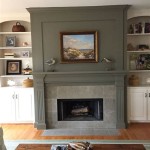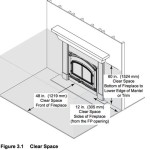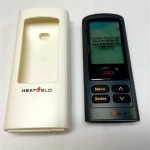Wood Burning Inserts For Fireplace Reviews: Finding the Right Heating Solution
Traditional open fireplaces, while aesthetically pleasing, are notoriously inefficient heating sources. A significant portion of the heat generated escapes up the chimney, resulting in minimal warmth within the living space and increased energy costs. Wood burning inserts offer a practical and efficient alternative, transforming an existing fireplace into a powerful and controllable heating appliance. These inserts are essentially self-contained stoves designed to fit directly into the existing fireplace opening. They provide a more complete and controllable burn, reducing heat loss and maximizing energy efficiency.
Selecting the appropriate wood burning insert involves evaluating various factors, including heating capacity, efficiency ratings, emissions standards, and features. Detailed reviews and comparisons of different models can greatly assist in making an informed decision. The following sections explore key considerations and features to examine when assessing wood burning inserts for your fireplace.
Heating Capacity and Firebox Size
One of the primary factors to consider is the heating capacity of the insert, typically measured in BTUs (British Thermal Units). The required BTU output depends on the size of the area you intend to heat, the insulation levels of your home, and the climate of your region. A larger space with poor insulation will necessitate a higher BTU rating. Manufacturers generally provide guidelines for the square footage that a particular insert can effectively heat. These guidelines are often based on ideal conditions, so it's prudent to consider a slightly higher BTU rating than initially calculated to account for varying circumstances.
The firebox size is directly related to the heating capacity and the amount of fuel the insert can hold. A larger firebox allows for longer burn times between refueling, which is particularly convenient during colder periods. However, a firebox that is too large for the space can result in over-firing and inefficiency. Therefore, it is crucial to match the firebox size to your heating needs. Consider the typical size of logs you will be burning, as a larger firebox can accommodate longer logs, reducing the need for frequent chopping.
Furthermore, consider the potential for zonal heating. While a central heating system aims to warm the entire house evenly, a wood burning insert excels at providing intense heat to a single, large living space. This allows for targeted heating, potentially saving on overall energy consumption if you primarily occupy that specific area.
Efficiency and Emissions Standards
The efficiency of a wood burning insert refers to the percentage of fuel energy that is converted into usable heat. A higher efficiency rating translates to less wood consumption and more effective heating. Older, non-EPA-certified inserts may have efficiency ratings as low as 40-50%, while modern, EPA-certified inserts can achieve efficiency ratings of 70% or higher. Higher efficiency results in less wasted fuel, reduced creosote buildup in the chimney, and lower overall heating costs.
Emissions standards are regulated by the Environmental Protection Agency (EPA) to minimize air pollution from wood-burning appliances. EPA-certified inserts are designed to burn wood more cleanly, producing significantly less particulate matter. These inserts often incorporate advanced combustion technologies, such as secondary air systems and catalytic combustors, to reduce emissions and improve overall efficiency. When evaluating wood burning inserts, prioritize models that meet or exceed current EPA standards. This ensures that you are using an environmentally responsible heating solution.
It is important to properly maintain your wood burning insert, including regularly cleaning the chimney, to ensure optimal efficiency and minimize emissions. Neglecting maintenance can lead to reduced performance, increased creosote buildup, and potential fire hazards. Choosing an EPA-certified insert not only benefits the environment but also contributes to safer and more efficient operation.
Features and Installation Considerations
Beyond heating capacity and efficiency, several features can enhance the usability and convenience of a wood burning insert. A variable-speed blower is a highly desirable feature, as it helps circulate warm air throughout the room more effectively. Some inserts offer thermostatic control, allowing you to maintain a consistent temperature. Other features to consider include air wash systems, which keep the glass door clean for a clear view of the fire, and ash drawers, which simplify ash removal.
The installation process of a wood burning insert is crucial for safety and performance. It is highly recommended to hire a qualified professional installer to ensure that the insert is properly connected to the chimney, meets all local building codes, and operates safely. Improper installation can lead to hazardous conditions, such as carbon monoxide leaks or chimney fires. Professional installers have the expertise and equipment to handle the installation process correctly.
Prior to installation, the existing fireplace and chimney should be thoroughly inspected to ensure they are in good condition and compatible with the insert. The chimney liner may need to be replaced or upgraded to meet safety standards. The hearth extension must also be adequate to protect the surrounding floor from sparks and embers. Thorough planning and professional installation are essential for a safe and effective wood burning insert system.
Finally, consider the aesthetics of the wood burning insert. While functionality is paramount, the insert should also complement the style of your existing fireplace and home décor. Inserts are available in a variety of finishes and designs, from traditional to modern, allowing you to choose a model that blends seamlessly with your living space.

Why A Wood Burning Fireplace Insert Bethesda Md Service

Wood Burning Fireplace Inserts Insert Installation

Napoleon Epi3 Wood Fireplace Insert Inserts By Rockford Chimney

T25i Timberwolf Wood Fireplace Insert Hearth Stove Patio

Lopi Premium Wood Fireplace Inserts Custom Hearth Fireplaces And Stoves

Ventis Hei240 Wood Burning Insert Rockford Chimney

Wood Burning Fireplace Inserts Insert Installation

Osburn Matrix Wood Burning Insert Fireplace Inserts Rockford Chimney

Best Fireplace Inserts Of January 2024 Forbes Home

Large Flush Wood Rectangular Nexgen Fyre Made In America Fireplace Xtrordinair
Related Posts








